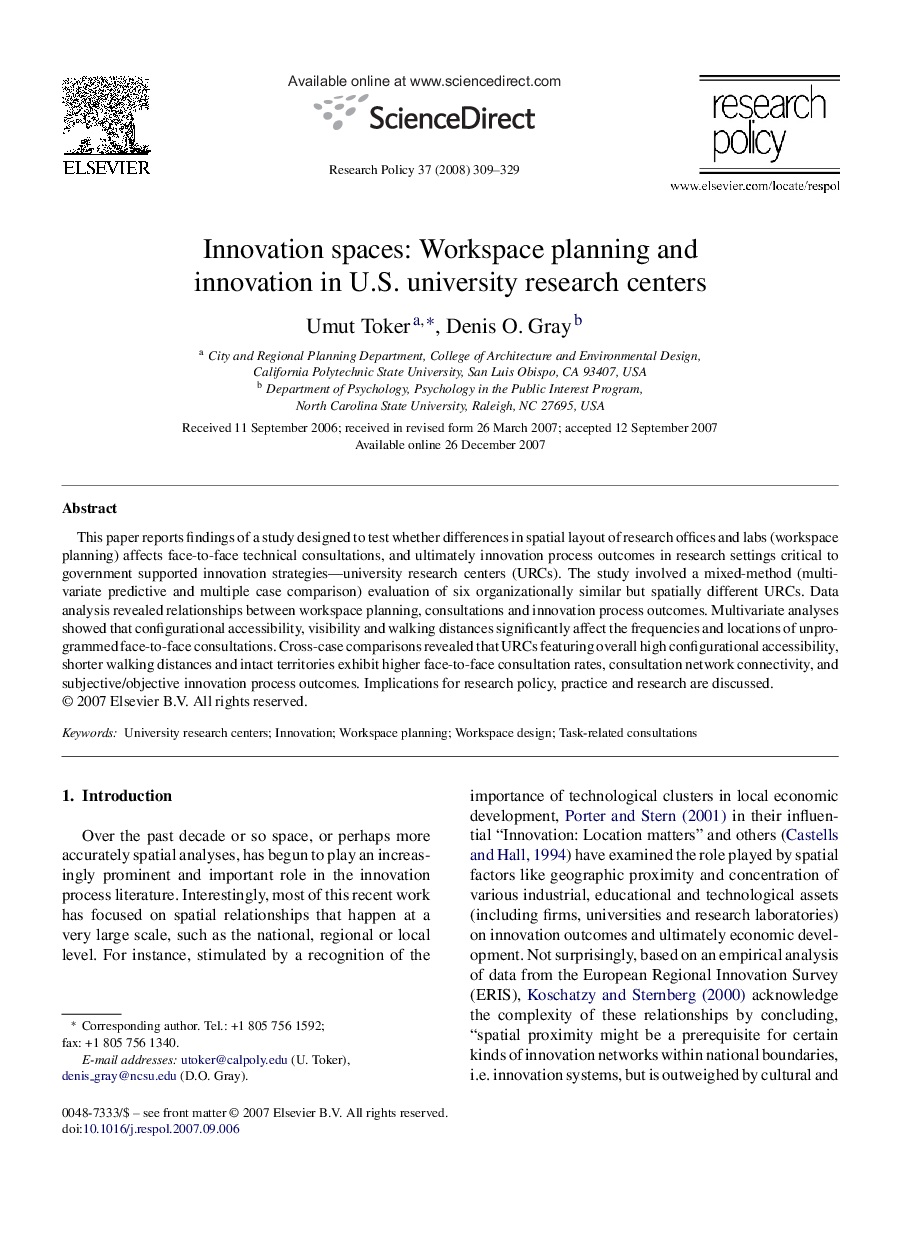| Article ID | Journal | Published Year | Pages | File Type |
|---|---|---|---|---|
| 984276 | Research Policy | 2008 | 21 Pages |
This paper reports findings of a study designed to test whether differences in spatial layout of research offices and labs (workspace planning) affects face-to-face technical consultations, and ultimately innovation process outcomes in research settings critical to government supported innovation strategies—university research centers (URCs). The study involved a mixed-method (multivariate predictive and multiple case comparison) evaluation of six organizationally similar but spatially different URCs. Data analysis revealed relationships between workspace planning, consultations and innovation process outcomes. Multivariate analyses showed that configurational accessibility, visibility and walking distances significantly affect the frequencies and locations of unprogrammed face-to-face consultations. Cross-case comparisons revealed that URCs featuring overall high configurational accessibility, shorter walking distances and intact territories exhibit higher face-to-face consultation rates, consultation network connectivity, and subjective/objective innovation process outcomes. Implications for research policy, practice and research are discussed.
